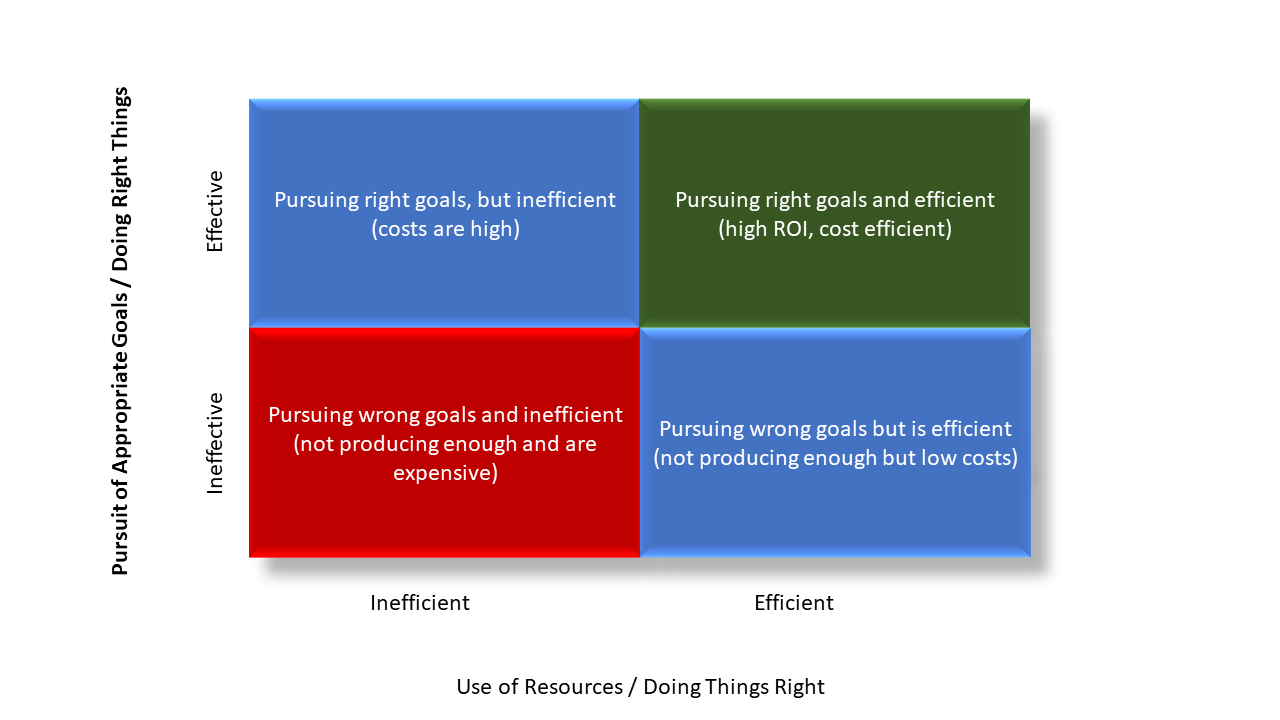OEE – Overall equipment effectiveness or Overall equipment efficiency?

OEE - Overall equipment effectiveness or Overall equipment efficiency?
Overall equipment effectiveness is the calculation made by Seiichi Nakajima in the 1960s to assess how efficient production equipment is used and to demonstrate the effects of the TPM - Total Productive Maintenance method. Today, OEE is a globally accepted standard for measuring productivity. Ideal or 100% OEE means that we have produced only good products, the fastest possible, without stopping times.
Can there be anything better than achieving maximum efficiency on the machine?
The constant tendency, that we are maximally effective is, of course, excellent, but this does not mean that we are LEAN, nor that we have the optimum production. Namely, Lean is a direction that requires the elimination of everything that does not add value, thus not just the loss of the OEE, but in this case, a very important component, which is taken into account by the overall productivity or Overall equipment efficiency, is still not covered. Overall productivity means achieving maximum efficiency with minimum resources.
Let's make a brief summary, for a better understanding of the difference between overall effectiveness and overall efficiency:
- Overall equipment effectiveness means to use machines up to the limit;
- Overall equipment efficiency means to use machines up to the limit and with minimal resources.
By understanding the importance of total efficiency, there was also a significant change in TPM. This led to the fact that the JIPM - Japan Institute of Plant Maintenance significantly transformed the original design of the method in 1989. It was defined as eight pillars of the TPM method.
With the new design, also the approach has changed, that many have not mastered yet.
The difference between the first and the second approach is that the "new" approach does not only determine how to master the seven major efficiency gaps on machines but 16 major efficiency losses. Besides of planned shutdowns and seven loss groups on the machine, we also take into account 5 large losses that relate to the work of people and 3 groups of losses, which we consider as "the rest". A new approach seeks to do more with less.
But why then do we all not accept this new approach with open arms?
It is known that the implementation of the TPM method is not intended to itself, or because it is required by customers, or because of the IATF standard, etc., but the first problem is that in general, there is a lack of knowledge of what TPM is, what goals it would be necessary to define and what kind of organization to set for the realization ... Everyone thinks, that those, who do this, have a specific organization, instead of looking for ways to change their own organization and ways of working. You know, expecting different effects, with the same way of working, as Einstein said, of course, does not work.
The implementation of the TPM approach in the pillars is long-term. For example, the first companies in Slovenia have adopted an approach that was defined in 1989 and began to implement it only around 2000, that is, more than ten years later. But why is the pillar approach still so slowly spreading to other companies, that more than 80% of companies that implement TPM in some form, still implement the outdated TPM method?
Let's just name a few reasons:
- There is no awareness and understanding of what TPM is (many still think that this is only a method for organizing maintenance);
- Companies work with consultants or consulting firms who are still working on the first, obsolete TPM approach;
- Leading and other responsible people acquire too little information to find out what the difference between the various TPM approaches is or do they seem to be irrelevant;
- In general, there are very few certified individuals who have been trained according to the original TPM method in Japan at JIPM - Japan Institute of Plant Maintenance ...
Is this a problem, if we are working on obsoleted methods?
Even the best companies are not perfect in implementing the TPM method, especially because this is a long-running process and in practice, it is necessary to overcome many challenges. Working out of obsolete methods means that we gain much less than we could or lose more than we would if we were approached according to current methods. In the case of losses, the problem is that they are not detected by automated measurement, so there are other ways of work that are often avoided because changing the organization of work and habits - the culture, as we have said, is usually a long-running process. In any case, we recommend that you learn more about new approaches, what the individual TPM pillar is and how to implement it in practice.
In addition to training, that explains the TPM method in eight pillars, there are more than 10 books and handbooks in the English language, but you need to be careful also about the choice, so we recommend some sources that you can support on:
- TPM and Process Industries (Step-By-Step Approach to TPM Implementation) 1st Edition by Tokutaro Suzuki (Author)
- TPM Total Productive Maintenance New Implementation Program in Fabrication and Assembly Industries Hardcover - 1996 by Kunio Shirose (Editor)
- https://www.jipm.or.jp/en/
- http://tpm.jmac.co.jp/tpm/index.html
You can also visit us at one of the training we perform at the headquarters of our company or, if you like, at your location. You can see the list and descriptions of the workshops in the "EDUCATION" tab or in the "CATALOG OF PROFESSIONAL WORKSHOPS".



